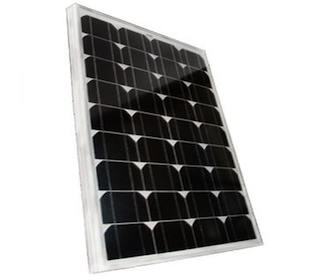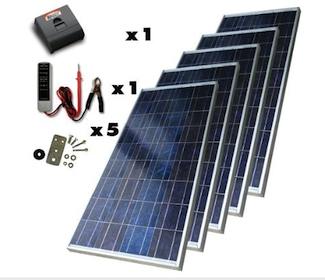Residential Solar Panels
Residential Solar Panels and Your Green Home
Adding solar power to your home is a great, visible way to reduce its environmental impact. A photovoltaic system uses an array of interconnected panels, and an inverter to convert the DC power to AC for the home. For homes that are completely off-grid, batteries store power for nighttime power or periods of cloudy weather.
An off-grid system is expensive; a more affordable way to add solar to a home is to intertie the solar power with electricity provided by a utility. In this case, the home uses solar power when the sun is shining, and electricity from the grid at night. If the home is creating more energy during the day than it's using, the utility will buy that excess power and feed it into the grid. This greatly reduces electricity bills, and in some cases even eliminate them.
Photovoltaic Panel Advantages
Photovoltaic panels have competition from thin-film photovoltaics. These are made to substitute for traditional asphalt shingles on the roof. They are much less obtrusive, but panels have some advantages:
- Proper Angles: photovoltaic panels mounted on a roof can be installed at angles different than the roof slope to better catch the sun's rays. Solar shingles have to follow the slope angle of the roof, which often isn't optimal.
- Maneuverability: Photovoltaic panels can be mounted on the ground, where they can easily be turned and angled to catch sunlight at different times of the year. The sun is not in the same spot in the sky throughout the year. This is especially important in northern areas where the sun's angle is very low during winter. Ground mounting also allows for easier maintenance and cleaning. Remember, panels need to be exposed to the sun, and clearing snow from them on a rooftop in the winter can be an issue.
- Affordability: Today, photovoltaic panels are typically cheaper than newer technologies.
- Proven technology and durability: Panels have been around for decades. They are designed to be long-lasting, providing power for many years with minimal maintenance. Being exposed to the elements year round, they are designed to withstand the heat of the sun, and also cold, rain, snow and hail.
Residential Solar Panels: How Many?
Photovoltaic panels are relatively inefficient, but they're improving, and the energy they create is emission free. Panels for residential usage have efficiencies less than 20 percent, meaning that less than 20 percent of the sunlight hitting the panel is actually turned into electricity. As efficiencies improve, more power is created with smaller panels, requiring less space on your home's roof or property.
Typical panels of 1 square meter are rated at 100 to 200 watts. Panels are rated by their performance in the brightest sunlight. Less sunlight obviously results in less power created. Positioning your photovoltaic panels to be in full sunlight as much as possible, and angled to attain the maximum exposure is critical. Clouds, dust, snow, and dirt will reduce output.
Determining the output of your photovoltaic panels will depend on your home's location and the installation of the panels.
Installation Options
High cost has been a hinderance for many wishing to add solar power to their homes. But just as their efficiency is gradually improving, the cost for solar is steadily declining. Coupled with the rising cost of traditional energy, the declining cost of solar technology is making it more competitive over the long-term.
The cost of solar is almost all up-front. The sunshine is free once the equipment is installed. To help temper these costs, many states and the federal government offer tax incentives, credits, and rebates for those who install solar power on their homes.
Another innovative way to keep the cost of solar down for homeowners is emerging; leasing. Instead of paying for the installation costs of photovoltaic panels and other equipment, companies are now leasing equipment to the homeowner for as little as $0 down. With the high initial cost eliminated, the homeowner only pays a small monthly lease. Coupled with a reduced electric bill, monthly costs can often be less than a regular electric bill.
Solar leasing companies will service and maintain the equipment for you, and often upgrade it as improvements are made.
There is also now a debate on which direction is best for solar panels. Traditionally, in the northern hemisphere solar panels face southward to create the most energy; now some experts are saying that having some or all solar panels face westward may be advantageous. By facing west, these solar panels absorb the powerful solar rays from the late afternoon and early evening sun, which also happens to be the time of day when electrical grids are stressed from people returning home from work or school and cranking the A/C and powering up appliances and devices. Read more about the debate HERE.
comments powered by Disqus



























































































































































































